Recent Posts
Freshen Up Your Home: 10 Tips for Spring Cleaning in West Valley City, UT
4/10/2024 (Permalink)
 Spring cleaning in West Valley City, UT.
Spring cleaning in West Valley City, UT.
Spring is finally here, and with it comes the urge to refresh and renew our living spaces. In West Valley City, Utah, where the winters can be harsh and the springtime is a welcome relief, spring cleaning takes on a special significance. Whether you're a seasoned resident or new to the area, these 10 tips will help you tackle your spring cleaning with ease and efficiency.
1. Create a Plan of Attack:
Before diving into your spring cleaning, take some time to create a plan. Identify which areas of your home need the most attention and prioritize tasks accordingly. Breaking down the cleaning process into manageable chunks will make it feel less overwhelming.
2. Declutter First:
Start your spring cleaning by decluttering your home. Go through each room and identify items that you no longer need or use. Donate or discard these items to free up space and create a more organized environment. Remember the rule of thumb: if you haven't used it in the past year, it's time to let it go.
3. Focus on High-Traffic Areas:
Pay special attention to high-traffic areas of your home, such as the entryway, living room, and kitchen. These areas tend to accumulate the most dirt and clutter, so giving them extra attention during spring cleaning will make a big difference in the overall look and feel of your home.
4. Deep Clean Carpets and Upholstery:
Winter weather can take a toll on carpets and upholstery, leaving them looking dull and dirty. Invest in a good carpet cleaner or hire a professional service to deep clean your carpets and upholstery. Not only will this improve the appearance of your home, but it will also help remove allergens and bacteria, creating a healthier indoor environment.
5. Don't Forget About Windows and Screens:
Spring is the perfect time to give your windows and screens a thorough cleaning. Use a glass cleaner and microfiber cloth to clean windows inside and out, and don't forget to wipe down window sills and tracks. Remove screens and wash them with warm, soapy water before allowing them to air dry completely.
6. Refresh Bedding and Linens:
As the weather warms up, it's time to swap out heavy winter bedding for lighter options. Wash all bedding, including sheets, blankets, and comforters, and consider hanging them outside to air out and freshen up. While you're at it, don't forget to wash curtains and other window treatments as well.
7. Tackle the Kitchen and Bathroom:
The kitchen and bathroom are two areas of the home that often require the most attention during spring cleaning. Clean and disinfect countertops, sinks, and appliances in the kitchen, paying special attention to areas that tend to collect grime, such as behind the stove and refrigerator. In the bathroom, scrub tile grout, clean the toilet, and replace shower curtains or liners if necessary.
8. Organize Closets and Storage Spaces:
Take advantage of spring cleaning as an opportunity to organize closets and storage spaces. Donate clothing and household items that you no longer need, and invest in storage solutions such as bins, baskets, and shelving to help keep your closets tidy and clutter-free.
9. Freshen Up Outdoor Spaces:
Don't forget about your outdoor spaces when spring cleaning. Sweep away debris from patios, decks, and walkways, and clean outdoor furniture and grill surfaces. Consider adding fresh mulch to flower beds and planting new flowers or shrubs to enhance curb appeal.
10. Maintain Your Cleaning Routine:
Once your spring cleaning is complete, make an effort to maintain your newly refreshed home by establishing a regular cleaning routine. Set aside time each week to tackle household chores such as vacuuming, dusting, and mopping, and address any messes or clutter as soon as they arise.
In conclusion, spring cleaning in West Valley City, Utah, is an opportunity to refresh and renew your living space after the long winter months. By following these 10 tips, you can tackle your spring cleaning with ease and efficiency, leaving your home looking and feeling its best for the season ahead.
Tips to Prevent Mold Growth in Your West Valley City, UT Home
3/11/2024 (Permalink)
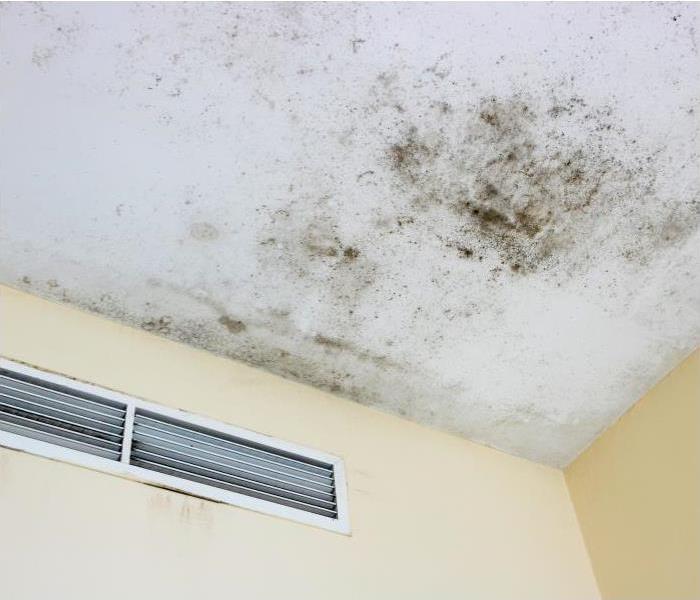 Prevent Mold Growth in West Valley City, UT.
Prevent Mold Growth in West Valley City, UT.
Nestled between the stunning Oquirrh and Stansbury mountain ranges, West Valley City, UT, offers residents a picturesque backdrop for their homes. However, the region's unique climate and occasional humidity can create an environment conducive to mold growth. Mold not only poses health risks but can also damage your home's structure and decrease its resale value. In this blog, we'll explore effective tips to prevent mold growth in your West Valley City home, ensuring a healthy living environment for you and your family.
10 Tips to Prevent Mold Growth
1. Control Indoor Humidity:
Utah's climate is characterized by dry air, but occasional spikes in humidity can occur. To prevent mold growth, it's crucial to control indoor humidity levels. Invest in a dehumidifier to maintain the relative humidity below 60%. Focus on areas prone to dampness, such as basements, bathrooms, and kitchens. Regularly empty and clean the dehumidifier to ensure optimal performance.
2. Improve Ventilation:
Proper ventilation is key to preventing mold in your home. Ensure that bathrooms and kitchens are equipped with exhaust fans that vent outside rather than into the attic. Use these fans during and after activities that generate moisture, such as cooking or showering. Additionally, consider installing an attic vent to promote air circulation and prevent the buildup of humid air.
3. Address Water Leaks Promptly:
Leaks can be a major source of moisture that fosters mold growth. Regularly inspect your home for leaks, paying attention to areas around windows, doors, and the roof. Address any leaks promptly, as even minor drips can lead to significant moisture accumulation over time. Repairing leaks not only prevents mold but also protects your home's structural integrity.
4. Clean and Dry Wet Areas Immediately:
Utah's climate can be unpredictable, and occasional rain or snowfall may occur. If water enters your home, whether through leaks or environmental factors, it's crucial to clean and dry wet areas promptly. Use towels, fans, or dehumidifiers to expedite the drying process and prevent mold from taking hold.
5. Ensure Proper Insulation:
Proper insulation plays a crucial role in preventing mold growth by minimizing condensation. Check your home's insulation, especially in areas like attics and basements. Ensure that insulation is installed correctly and in good condition. If necessary, consider upgrading insulation to prevent moisture buildup and create a mold-resistant environment.
6. Regularly Clean and Maintain Gutters:
Gutters play a vital role in directing water away from your home. Clogged gutters can lead to water overflow and potential water damage, creating conditions favorable for mold. Schedule regular gutter cleanings, especially during the fall when leaves and debris can accumulate. Ensure that downspouts are directed away from the foundation to prevent water from pooling around your home.
7. Use Mold-Resistant Products:
When renovating or upgrading your home, consider using mold-resistant materials. Mold-resistant drywall and paint can be effective in preventing mold growth in areas prone to dampness. These products have anti-microbial properties that inhibit mold development, providing an additional layer of protection for your home.
8. Keep Indoor Plants in Check:
While indoor plants can enhance the aesthetic appeal of your home, they can also contribute to mold growth. Soil in potted plants provides a breeding ground for mold spores, especially if overwatered. Be mindful of your watering practices and avoid overwatering. Place a layer of gravel or sand on top of the soil to discourage mold growth.
9. Regularly Clean and Ventilate Appliances:
Household appliances like washing machines, dryers, and refrigerators can be sources of moisture. Regularly clean and maintain these appliances to prevent mold growth. Ensure proper ventilation for appliances that generate moisture, such as clothes dryers, by venting them outside rather than into the home.
10. Schedule Professional Inspections:
Regular professional inspections can identify potential issues before they escalate. Consider scheduling an annual inspection with a qualified home inspector to assess your home's overall condition. Professionals can identify hidden leaks, ventilation issues, or areas of concern that may contribute to mold growth. Addressing these issues proactively can save you time and money in the long run.
Preventing mold growth in your West Valley City, UT home requires a combination of proactive measures and regular maintenance. By controlling indoor humidity, addressing leaks promptly, and implementing mold-resistant practices, you can create a healthy living environment for you and your family. Regular inspections and a vigilant approach to moisture management will help safeguard your home from the detrimental effects of mold, ensuring that it remains a safe and comfortable haven amidst the stunning landscapes of West Valley City.
SERVPRO of West Valley City's Expertise in Resolving Water Damage from Leaking Toilets
1/15/2024 (Permalink)
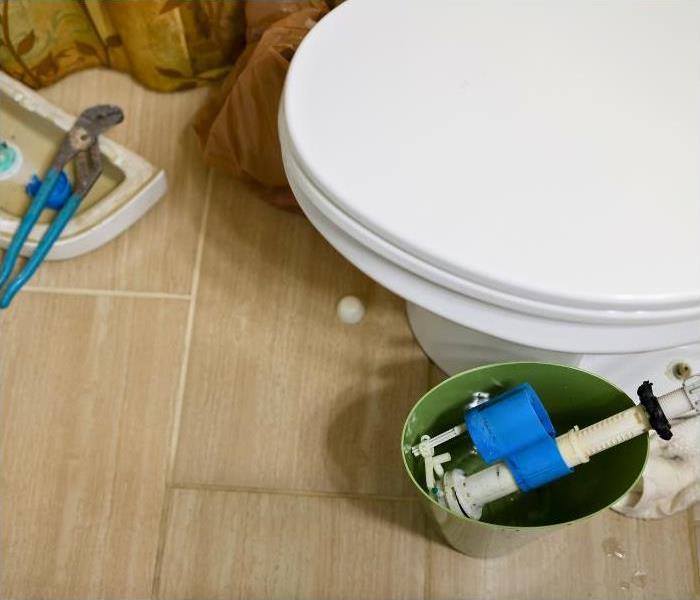 Leaking toilet in West Valley City, UT.
Leaking toilet in West Valley City, UT.
Water damage in residential homes can be a nightmare for homeowners, wreaking havoc on property and belongings. One of the most common culprits is a leaking toilet, a seemingly minor issue that can lead to significant problems if not addressed promptly. In this blog post, we will explore the impact of water damage caused by a leaking toilet and shed light on how SERVPRO of West Valley City acts swiftly to mitigate damage and restore homes to their preloss condition.
The Hidden Perils of a Leaking Toilet:
A leaking toilet may seem like a minor inconvenience at first, but its consequences can be far-reaching. The continuous drip of water can permeate flooring, walls, and even seep into structural components, causing hidden damage that may not be immediately apparent. Mold growth is another concern, as the moist environment created by water leaks provides an ideal breeding ground for these troublesome fungi.
Homeowners often underestimate the potential severity of water damage from a leaking toilet, assuming that a simple DIY fix will suffice. However, time is of the essence when dealing with water damage, and quick action is crucial to preventing further harm to the property.
The Importance of Swift Mitigation:
Water damage can escalate rapidly, leading to structural issues, electrical hazards, and compromised indoor air quality. Swift mitigation is essential to minimize the extent of the damage and reduce the likelihood of secondary issues such as mold growth.
SERVPRO of West Valley City understands the urgency of water damage situations and responds promptly to mitigate the damage. Their team of highly trained professionals is equipped with state-of-the-art tools and technology to assess the extent of the damage, extract water, and implement drying techniques efficiently.
Immediate Response and Assessment:
Upon receiving a call, SERVPRO of West Valley City dispatches a team to the affected property without delay. The first step is a thorough assessment to determine the scope of the water damage. Specialized moisture detection equipment is used to identify hidden pockets of water behind walls, under flooring, and within structural components.
Once the assessment is complete, the team develops a tailored mitigation plan, taking into account the specific characteristics of the water damage. This plan outlines the steps required to restore the property to its pre-damage condition and includes a timeline for each phase of the restoration process.
Water Extraction and Drying:
The next crucial step is the removal of standing water and moisture from the affected areas. SERVPRO of West Valley City employs powerful water extraction equipment to efficiently remove excess water, preventing further damage to the property.
State-of-the-art drying equipment, such as industrial-grade dehumidifiers and high-speed air movers, is strategically placed to expedite the drying process. This not only prevents the growth of mold but also helps salvage materials that may otherwise be irreversibly damaged.
Meticulous Restoration:
Once the affected areas are thoroughly dried, the restoration process begins. SERVPRO of West Valley City focuses on restoring rather than replacing, whenever possible, to minimize costs and reduce the disruption to homeowners. This may involve repairing or replacing damaged drywall, flooring, and other structural elements.
In cases where materials cannot be salvaged, the SERVPRO team ensures that replacements match the existing materials, maintaining the aesthetic integrity of the home. Throughout the restoration process, homeowners are kept informed of progress, ensuring transparency and peace of mind during a challenging time.
Preventing Future Water Damage:
In addition to mitigating current water damage, SERVPRO of West Valley City takes proactive measures to prevent future incidents. This may include identifying and addressing the root cause of the leaking toilet, recommending plumbing repairs, or providing advice on routine maintenance to homeowners.
Education is a key component of SERVPRO's approach, empowering homeowners to recognize and address potential water damage risks before they escalate. By taking a holistic approach to water damage restoration, SERVPRO of West Valley City not only resolves immediate issues but also helps safeguard homes against future incidents.
Dealing with water damage from a leaking toilet requires swift and expert intervention. SERVPRO of West Valley City stands out for its commitment to prompt response, meticulous assessment, and efficient restoration. By addressing water damage comprehensively and preventing future incidents, SERVPRO ensures that homeowners can return to a safe and fully restored living environment. When water damage strikes, count on the professionals at SERVPRO of West Valley City to turn a stressful situation into a successful restoration.
Steps to Preventing and Addressing Frozen Pipes
12/28/2023 (Permalink)
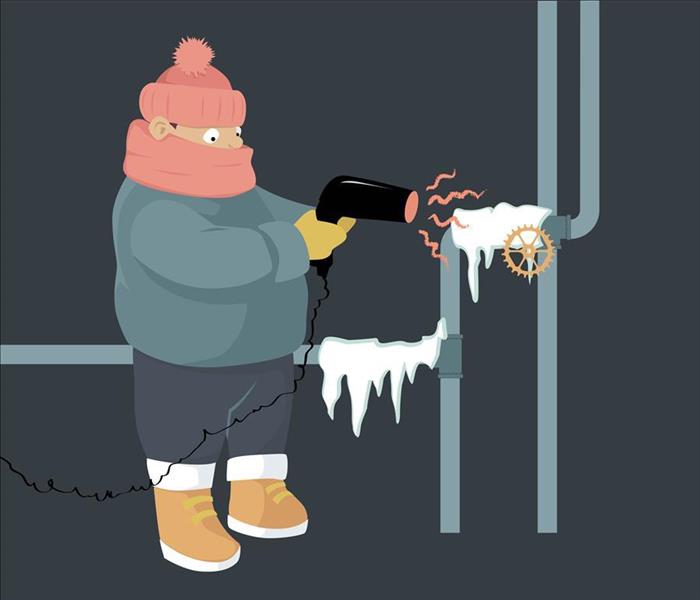 Frozen Pipes in West Valley City, UT.
Frozen Pipes in West Valley City, UT.
As winter blankets West Valley City, UT, with its icy embrace, homeowners must gear up for the challenges that come with the season. One of the most prevalent and potentially damaging issues during winter is frozen pipes. When temperatures plummet, the water inside pipes can freeze, causing them to expand and potentially burst and causing water damage. Dealing with frozen pipes requires a combination of preventative measures and swift action if damage occurs. In this comprehensive guide, we'll delve into the intricacies of frozen pipes, providing practical tips to prevent them and exploring how services like SERVPRO can be a lifeline in mitigating damage.
Understanding the Threat
Frozen pipes pose a significant threat to homes, potentially leading to costly water damage. In West Valley City, where winter temperatures can be unforgiving, taking proactive measures is essential. When water freezes within pipes, it expands, exerting pressure that can cause pipes to crack or burst. The damage often goes unnoticed until temperatures rise, and the ice within the pipes begins to thaw, resulting in leaks and flooding.
Preventative Measures
Insulate, Insulate, Insulate: The foundation of preventing frozen pipes lies in proper insulation. Identify vulnerable areas, such as attics, basements, and crawl spaces, and insulate pipes using sleeves or heat tape. This extra layer helps maintain a consistent temperature, reducing the risk of freezing.
Let the Faucet Drip: Allowing faucets to drip can be a simple yet effective strategy. By letting water flow, you relieve pressure in the pipes, minimizing the chances of freezing. Focus on faucets connected to pipes along exterior walls and those in unheated areas.
Maintain a Consistent Temperature: While it may be tempting to lower the thermostat to save on energy costs, doing so during winter can put your pipes at risk. Keep your home at a stable temperature, especially during the night or when you're away. This ensures that the plumbing stays warm and functional.
Open Cabinet Doors: For pipes located under sinks, opening cabinet doors allows warm air to circulate, providing additional protection against freezing. This is particularly crucial in areas where pipes are exposed to colder temperatures.
Seal Leaks and Gaps: Conduct a thorough inspection of your home for any gaps or cracks that could allow cold air to seep in. Seal these openings with caulk or insulation to prevent drafts, which can contribute to frozen pipes. Not only does this protect your plumbing, but it also enhances overall energy efficiency.
In Case of Emergency: SERVPRO to the Rescue
Despite taking all necessary precautions, frozen pipes can still catch homeowners off guard, leading to potential water damage. In such cases, swift and professional action is paramount. This is where SERVPRO, a trusted leader in the restoration industry, comes into play.
SERVPRO's Approach to Frozen Pipe Emergencies
Immediate Response: SERVPRO understands the urgency of water damage caused by frozen pipes. Their team of experienced technicians responds promptly to mitigate further damage. Time is of the essence, and SERVPRO's quick action can make a significant difference in minimizing the impact on your home.
Water Extraction: Upon arrival, SERVPRO assesses the extent of water damage and employs advanced equipment for efficient water extraction. Removing excess water is crucial to prevent secondary issues such as mold growth and structural damage.
Drying and Dehumidification: After water extraction, SERVPRO focuses on thorough drying and dehumidification. This step is essential in preventing lingering moisture that could lead to mold growth. State-of-the-art drying equipment is used to restore optimal humidity levels in the affected areas.
Restoration Services: SERVPRO's comprehensive restoration services cover everything from damaged drywall and flooring to compromised structural elements. Their goal is to return your home to its pre-damage condition, minimizing disruption and ensuring a seamless recovery process.
As winter's chill settles over West Valley City, UT, homeowners must arm themselves with knowledge and preparation to combat the threat of frozen pipes. By implementing preventative measures and knowing who to turn to in case of an emergency, you can navigate the winter season with confidence, ensuring the safety and integrity of your home. Stay warm, stay prepared, and trust the experts when the unexpected occurs. With SERVPRO by your side, you can weather the winter freeze knowing that a dedicated team is ready to restore your home to its former glory.
Protecting Your Home and Family: Minimizing Lint Fire Risks in West Valley City, UT
10/23/2023 (Permalink)
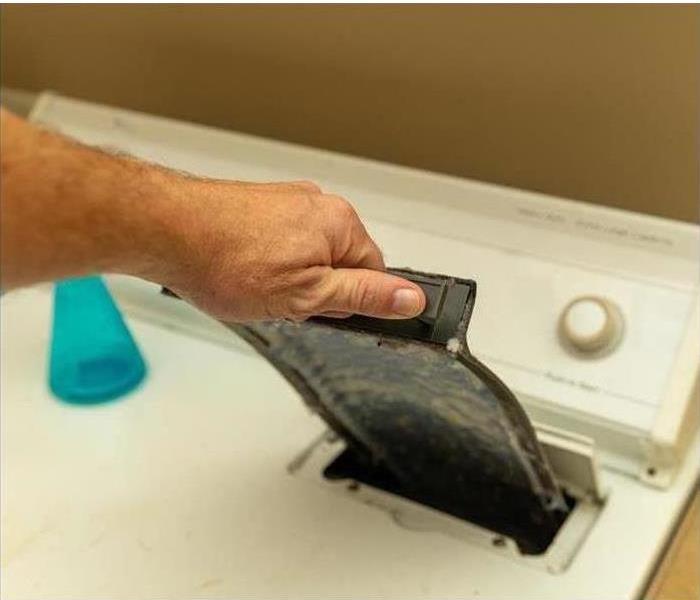 Regular dryer cleaning can help reduce the risk of a lint fire in your West Valley City, UT, home.
Regular dryer cleaning can help reduce the risk of a lint fire in your West Valley City, UT, home.
When it comes to the safety and security of your home, there are many potential risks that we all must be aware of, and one that is often overlooked is the danger of lint fires. In West Valley City, Utah, where extreme weather conditions can make our homes more susceptible to fires, it's crucial to take preventive measures. In this blog, we will discuss in more detail how to limit lint fire risks and how SERVPRO of West Valley City can assist you in restoring your home after suffering fire damage.
Lint Fire Risks in West Valley City
West Valley City, nestled in the heart of the beautiful state of Utah, boasts a diverse climate, ranging from freezing winters to scorching summers. Such temperature variations can lead to increased lint production in our homes. Lint, the tiny fibers shed by our clothing and linens, may seem harmless, but it can accumulate in the lint trap of our dryers and create a potentially explosive hazard.
Why Lint is a Fire Hazard:
Lint is highly flammable, and when it accumulates in the lint trap and dryer vents, it becomes a significant fire risk. As the dryer heats up, lint can ignite, leading to a dangerous and potentially devastating fire. To better understand this risk, let's delve into some key aspects of lint fire hazards:
Lint Accumulation: Lint collects not only in the dryer's lint trap but also within the dryer vent system. Over time, this accumulation becomes dense and highly flammable.
Heat Buildup: As the dryer operates, it generates heat. This heat, when combined with the presence of excess lint, can reach temperatures high enough to cause ignition.
Oxygen Supply: Dryer vents, designed to release hot, moist air from the dryer, often provide a steady flow of oxygen, which is essential for a fire to grow and spread.
Spread of Fire: Once a fire starts in the dryer, it can quickly spread to other parts of the home, especially if the dryer is located near combustible materials.
Now, let's explore practical steps to minimize these lint fire risks in your West Valley City home.
Minimizing Lint Fire Risks
Regular Dryer Vent Cleaning: The most effective way to mitigate lint fire risks is to clean your dryer vents regularly. Annual professional vent cleaning is highly recommended. This will ensure that all accumulated lint is removed, reducing the risk of a fire hazard.
Clean the Lint Trap: After each load of laundry, make it a habit to clean your dryer's lint trap. This simple step can significantly reduce the amount of lint in the vent and decrease fire risk.
Vent Inspection: Regularly inspect your dryer vent for any blockages, damage, or disconnections. If you notice any issues, address them promptly to prevent lint buildup and the risk of fire.
Keep Combustibles Away: Store combustible materials, such as cleaning supplies and paper products, away from your dryer. Make sure there's nothing flammable near the dryer to reduce the risk of fire spread.
SERVPRO of West Valley City: Your Fire Damage Restoration Partner
Despite taking preventive measures, accidents can still happen. If your home in West Valley City experiences a fire, SERVPRO of West Valley City is here to help. Our team of highly trained professionals specializes in fire damage restoration and is dedicated to helping you get your life back to normal as quickly as possible.
Emergency Response: In the aftermath of a fire, prompt action is essential. Our team is available 24/7 to respond to your emergency, ensuring that your property is quickly assessed and steps are taken to prevent further damage.
Assessment and Planning: We conduct a thorough assessment of the damage and create a personalized plan to restore your home. Our experts understand that each fire damage situation is unique and requires a tailored approach.
Cleanup and Restoration: We use state-of-the-art equipment and techniques to clean and restore your home. From soot and smoke removal to odor elimination, we ensure your property is safe, clean, and habitable again.
Support and Communication: Throughout the restoration process, we maintain open lines of communication with you. We understand that dealing with a fire is a traumatic experience, and we are here to provide support and updates every step of the way.
Preventing lint fires is crucial for the safety of your home and family in West Valley City, Utah. By following the simple steps mentioned above, you can significantly reduce the risk of a lint fire. However, if the unexpected happens and your home experiences fire damage, SERVPRO of West Valley City is your trusted partner for efficient and effective fire damage restoration. We are committed to helping you recover and rebuild your life after a fire, ensuring that your home is once again a safe and comfortable place for you and your family. Don't wait until disaster strikes; take action today to protect your home and loved ones from the risks of lint fires.
The Flood Water Cleanup Process
9/13/2023 (Permalink)
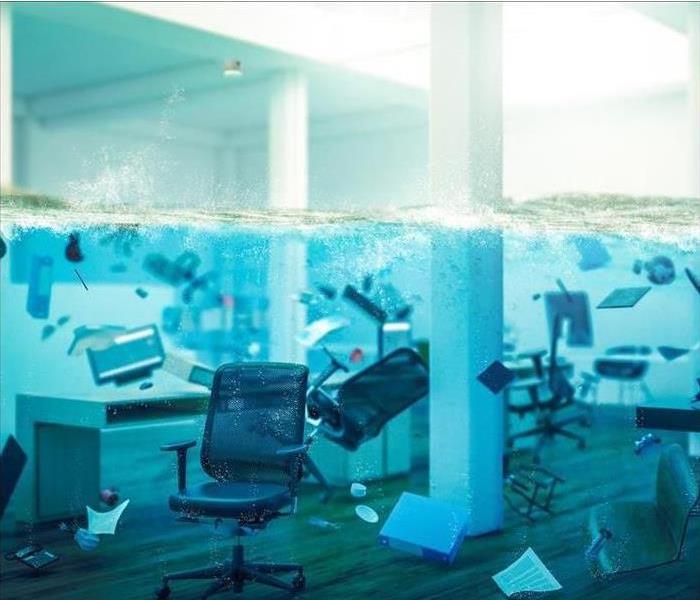 Flooding can cause severe damage.
Flooding can cause severe damage.
Excess water can cause a lot of damage to your commercial building in West Valley City, UT, and these issues can only be properly mitigated by certified water restoration experts. When the flood water in question is contaminated, this adds extra steps to the cleanup process. It's important to understand the measures necessary to ensure that your building is free of both moisture and bacteria.
Steps for Cleanup After Flooding or Toilet Overflow
A simple pipe break can be a big problem, but at least the water it releases is clean. By contrast, Category 3 water is contaminated. It can come from a variety of sources:
- Overflowing toilet
- Groundwater seepage
- Storm damage
- Municipal sewer backup
Any time your building is flooded with Category 3 water, mitigation automatically includes measures to ensure that no contamination gets left behind.
- Extract Excess Water
Removing water is a crucial step that prevents it from causing further damage. Technicians pump it out of the building. Then they use special equipment to get rid of whatever the pump couldn't extract. They must assess which items and parts of the structure are salvageable before they can continue with remediation.
- Remove Debris
Any debris that enters your building along with the flood water must also be removed. Additionally, all porous materials that are saturated with contaminated water need to be torn out. This inevitably includes carpet and insulation, but it may also mean that drywall, floor pads and ceiling tiles have to go. Technicians have to clear the area of all ruined items.
- Rinse Area
No matter how meticulous the mitigation team is, some debris will not be able to be removed manually. The only way to get it off the remaining surfaces in your building is to rinse it. The purpose of the initial rinse is to remove all remaining particles that don't belong in the space.
- Sanitize Surfaces
Once all the dirt and particles that you can see have been washed away, it's time to disinfect the remaining surfaces. Technicians use industrial-strength cleaners to ensure that all bacteria and microbes are killed in the cleaning process. For spaces that are hard to reach, they may need to use equipment that helps them get the detergent into nooks and crannies.
- Dry Thoroughly
There is often residual moisture left by the cleaning process. To prevent secondary damage such as mold, your building needs to be dry. Fans are useful not only for drying surfaces but also for bringing the humidity level back under control.
- Conduct Tests
The final step before the restoration phase begins is confirmation that the space has been sanitized. Technicians may perform a variety of tests, including surface swabs and air quality measures, to make sure that their efforts to disinfect the building were successful. If the results are not satisfactory, they know they have more cleaning to do before moving on to rebuilding.
Cleaning up after flood water is always a multi-step process. When the damage is caused by Category 3 water, however, even more tasks must be added to mitigate it completely.
5 Steps for Water Mitigation After a Building Pipe Burst
8/31/2023 (Permalink)
 Bursting pipes can lead to severe water damage.
Bursting pipes can lead to severe water damage.
When you notice that a pipe has broken or a supply line leaking at your West Valley City, UT, commercial building, it can bring on a sense of panic. Water could still be pouring in, but all you can think about is how to properly perform the pipe burst cleanup procedure.
These basic steps must be taken to keep damage to a minimum.
- Shut Off Electricity
First and foremost, in this situation, you must ensure that everyone remains safe. Turn off the electricity to the part of the building affected by the water, or to the entire building. If there are electronics, appliances, or outlets in the area, an electrical current could be in the water, so don't let anyone walk through it or touch anything until the electricity is shut off. If you can't navigate to the breaker box safely, call a professional electrician or the power company to shut it off before the water cleanup begins.
- Remove Soaked Materials
Next, you must get all of the water-soaked material out of the building. Wet items will only contribute to the excess humidity that needs to be eliminated. Soaked carpets and drywall will have to be removed and won't be salvageable. Some porous items such as wooden or upholstered furniture may be salvageable if they can be completely dried soon enough.
- Extract Standing Water
All standing water must be extracted as soon as possible. Every minute counts when it comes to water damage; standing water can wreak havoc indoors. A wet/dry is ideal for safely, quickly, and efficiently eliminating the water. It's a great tool to have on hand for water emergencies like a pipe burst cleanup. However, if you don't have one, many home improvement stores rent them. Mops and towels will also do the job.
- Dry Everything
Everything in the affected area must be thoroughly dried as swiftly as possible. Besides structural damage, excess moisture can contribute to mold growth. Mold can begin growing within 24 hours of water exposure, and it can get out of control fast. Not only can standing water cause damage but humidity can also. If the humidity outside is lower than the indoor level, open windows and doors to let the fresh air blow through. You can also use fans, heaters, and dehumidifiers. Dehumidifiers can also be rented at home improvement and hardware stores. You must pay close attention to the unit to empty the collected water when necessary. If you feel you cannot dry the area properly, water damage restoration professionals have the expertise and industrial-grade equipment for these situations.
- Inspect for Damage
Finally, once the job is complete, it's essential to inspect for damage to be repaired as soon as possible. Ideally, you can have professionals inspect the area because they know where to find damage and how to best resolve the problem. They'll check for structural water damage and mold growth and determine any repairs or cleanup procedures that must be performed.
In a water disaster, such as a supply line leaking, it's advantageous to know what to do before the situation arises. A pipe burst cleanup will never be pleasant, but it can go more smoothly having a plan in place.
3 Things Not To Do After a Flood
8/31/2023 (Permalink)
 Heavy rains may lead to flood damage.
Heavy rains may lead to flood damage.
It’s one of many homeowner’s worst nightmares: a large storm or local disaster has flooded your neighborhood in West Valley City, UT. Many who experience flooding for the first time are unprepared and uninformed, not knowing what to do after flood water has covered the streets or entered their home. To help you prepare, whether you’re facing a flooded home now or foresee its possibility in the future, here are three things not to do after a flood:
3 Things to Avoid After a Flood
1.Remain in your home. For you and your family’s safety, if water has entered your home, it’s important to leave and not reenter until flooding has subsided. In a flood’s immediate aftermath, the risk of rising water is still imminent due to the possibility of more rain, a compromised levy or busted dam. Find refuge outside the flood area, whether it be in a hotel, a loved one's home or a public shelter.
2. Touch the water. Flood water can be contaminated with any number of bacteria, sewage and/or chemicals that can be harmful to your skin and health. It’s also imperative to avoid standing water to minimize the risk of electric shock from electrical lines and equipment touching the water. If you must enter or be around the water for any reason, protective clothing such as rubber boots should be worn.
3. Fix it yourself. Repairing flood damage in a home can require a large amount of construction materials, professional knowledge and skill to ensure the damage is fully repaired and any mold is removed. Instead of trying to take on the job yourself, it’s best to save time and additional headaches by contacting a water damage repair and restoration company.
For any homeowner, flood water is certainly an unwelcome sight. Knowing what to do, or not do, in this type of disaster is imperative to keep you and your family safe and to begin the restoration process successfully.
Steps of the Fire Restoration Process
8/18/2023 (Permalink)
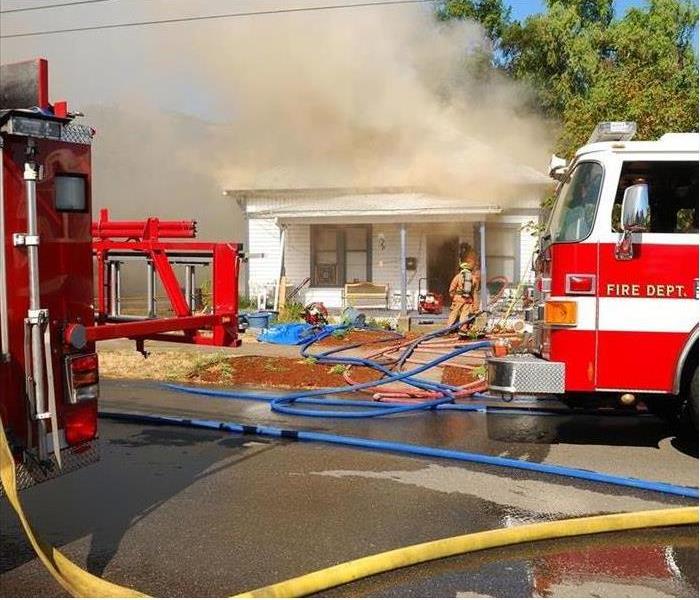 Fire damage in West Valley City, UT.
Fire damage in West Valley City, UT.
A fire in your home in West Valley City, UT, can cause a lot of damage in a short amount of time. After the flames are put out, fire restoration can begin. There are several steps to this process.
Important Tips to Start the Fire Restoration Process
- Initial Contact
Even if the fire doesn't reach all areas of your home, you still need to call fire damage mitigation specialists. They are certified to complete a thorough inspection and treat any problems they find:
- Smoke damage
- Weakened structure
- Soot residue
- Water issues
Other than your insurance provider, the cleanup team is the first call you need to make. Fast contact means that they are more likely to be able to repair the damage before any further problems occur.
- Damage Assessment
The first thing the technicians will do when they arrive is to survey the affected area. They look for weak spots and damaged materials. They then compile a list of tasks that need to be completed so that they can present you with an estimate that will be helpful in filing your insurance claim.
- Material Removal
Before any repairs can be done, the cleanup crew has to remove the parts that can't be salvaged. Drywall, insulation, flooring and ceiling materials may need to be torn out, even if they weren't directly touched by the flames. They may have water damage from the emergency efforts to subdue the fire, or the soot may be embedded deep within the porous materials.
- Surface Cleaning
The next step of the fire restoration process is cleaning all the remaining surfaces. Smoke and soot continue to erode materials the longer they are left on them, so prompt attention is the key to successful salvage. Technicians are likely to use a combination of chemicals and equipment to rid all cracks and crevices of unwanted substances and get rid of any lingering smoke smell.
- Area Drying
To prevent mold growth and other secondary damage, the mitigation team must remove all excess moisture from the affected area. The amount of water used to put out a fire makes this step one of the crucial tasks for ensuring that remediation is thorough.
- Item Repair
The structure isn't the only thing in your home that can be affected by a fire. Damage cleaning also includes determining which of your belongings must be thrown away and which ones can be restored. Before you toss items from the fire, give the mitigation team a chance to salvage them. You may be pleasantly surprised to find out how many things can be repaired.
- Fire Restoration
Finally, after everything is clean and dry, the team can rebuild the damaged parts of your home to make it livable again. They install new walls and flooring and make sure that the paint, tile and wallpaper match the remaining structures. The job isn't done until the affected area looks like there was never a fire in the first place.
No one likes the idea of a fire breaking out at home, but there's often a lot that can be done to save what's left. Once you call the fire restoration experts, they can get to work on your damaged home.
6 Tips for Preventing Mold Growth After a Flood
8/4/2023 (Permalink)
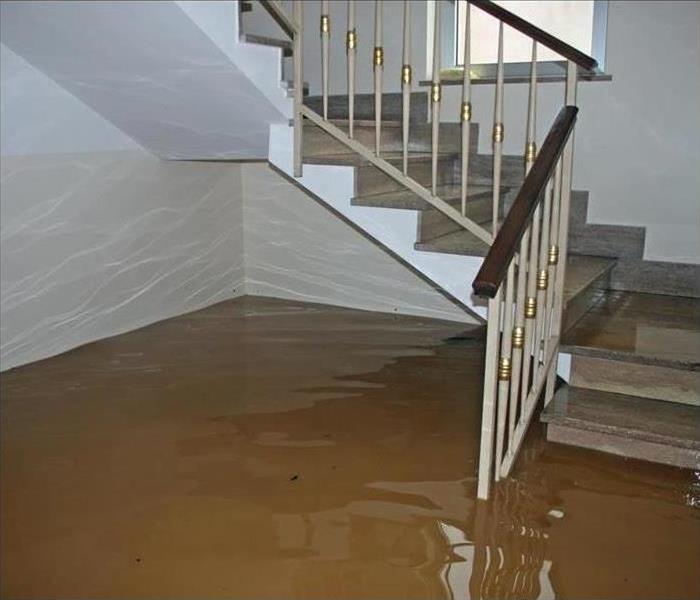 Flooding can cause severe mold damage if not cleaned properly.
Flooding can cause severe mold damage if not cleaned properly.
Floods can cause a significant amount of property damage; however, the initial damage from the water isn't the only problem homeowners face. The moist conditions created by flooding in a home often lead to mold growth. These tips can help you avoid this problem.
6 Ways To Avoid Mold Due To Standing Water
Mold needs several basic things to flourish. Mold requires moisture, food, warmth, and oxygen to grow. It is difficult to eliminate food sources or manipulate the temperature in a home to affect mold. The primary way to prevent mold problems is to reduce moisture.
- Dry Your Property Out Quickly
As soon as it is safe, you should begin drying out your property. Mold can begin growing in 24 to 48 hours from the initial water exposure. This makes it important to remove any standing water and dry out wet materials and contents as soon as you can. You may be able to remove small amounts of water with a wet/dry vacuum. You will probably need professional equipment to remove larger amounts of water. In some cases, it may be wise to contact a water remediation company in West Valley City, UT, to speed up the process of drying out the home.
- Increase Ventilation
If the weather permits it, open windows and doors during the day to increase airflow. Use fans to circulate the air and increase water evaporation. Position the fans to blow air out of doors and windows. Reduce indoor humidity by using dehumidifiers. A dehumidifier designed for home use may work for smaller spaces, but for larger spaces, you may need to rent an industrial model.
- Remove Wet Items
Remove wet debris and contents. Carpets, carpet pads, drywall, ceiling tiles, and other porous materials may need to be discarded because these items are difficult to clean. Salvageable contents may be left outside in the sun to dry or taken off-site by a restoration company for cleaning. Clean surfaces that were exposed to floodwater with a disinfectant or sanitizer to kill mold spores and bacteria. If you can't immediately remove wet carpet, extract the water from it with a commercial carpet extractor or wet/dry vacuum.
- Shut Off Water Sources
If anything in your home is leaking water, shut off the water to your home. As long as there is a source of moisture, mold growth is likely to be a problem. Do not turn the water back on until broken pipes or leaking appliances are repaired.
- Turn Off HVAC Systems
Try to keep your home at a moderate temperature, but avoid over-cooling or overheating. A home that is too hot or too cold can cause the drying process to take longer.
- Watch for Warning Signs
If you are noticing stains on ceilings or walls or noticing musty smells, then you may have a mold issue. Take steps to remove the mold before the problem can get worse.
No homeowner wants to go through the process of restoring a flood-damaged home only to have to deal with a mold growth problem. Fortunately, there are steps you can take to reduce your chances of having to deal with this problem.





 24/7 Emergency Service
24/7 Emergency Service









